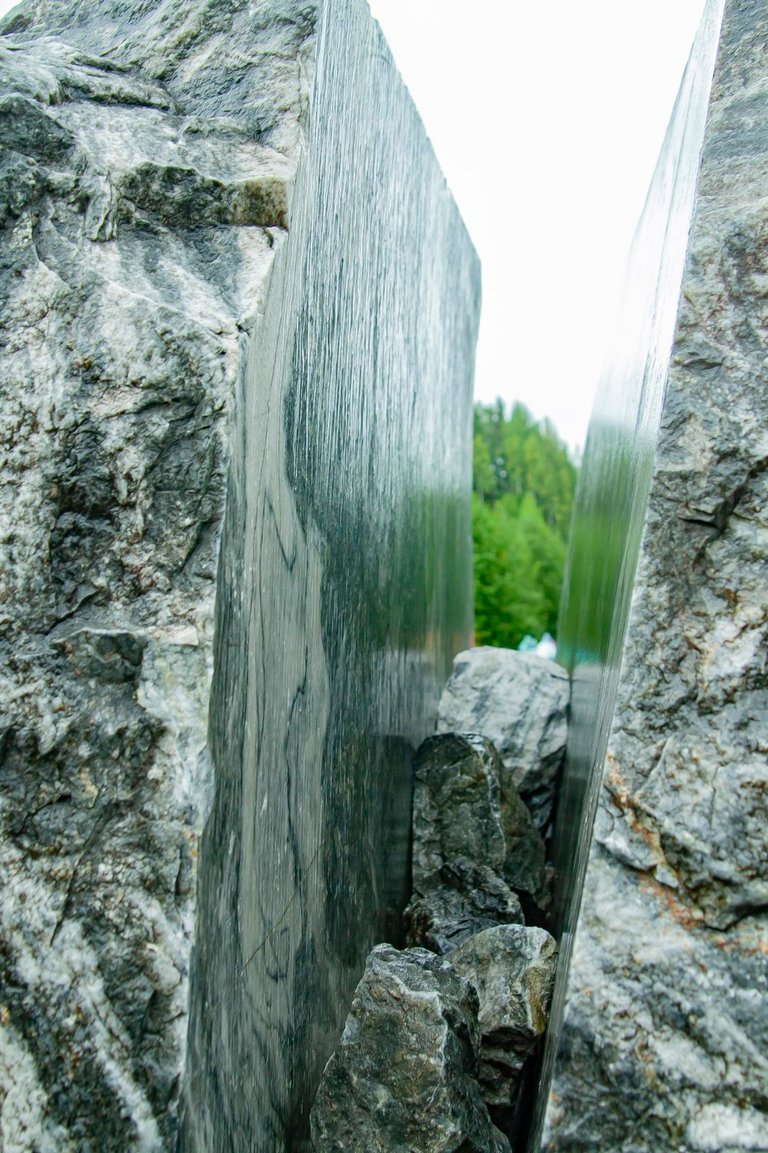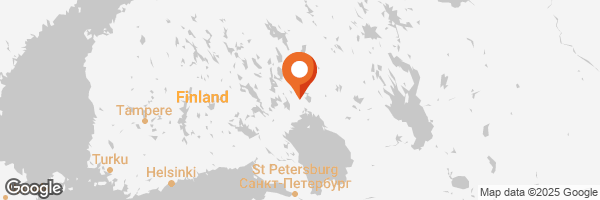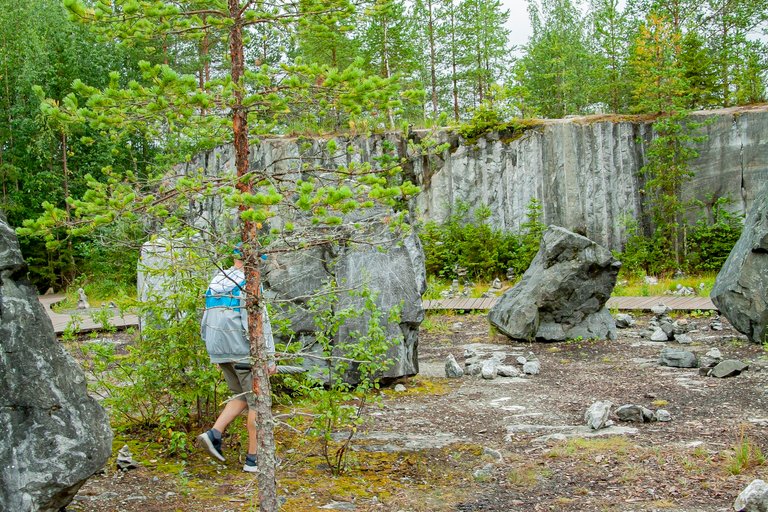
When we arrived at the marble quarry, it immediately seemed to me that I had seen such marble somewhere before. And he turned out to be right: it was from this place that the extracted marble was used in the construction and decoration of some St. Petersburg metro stations.
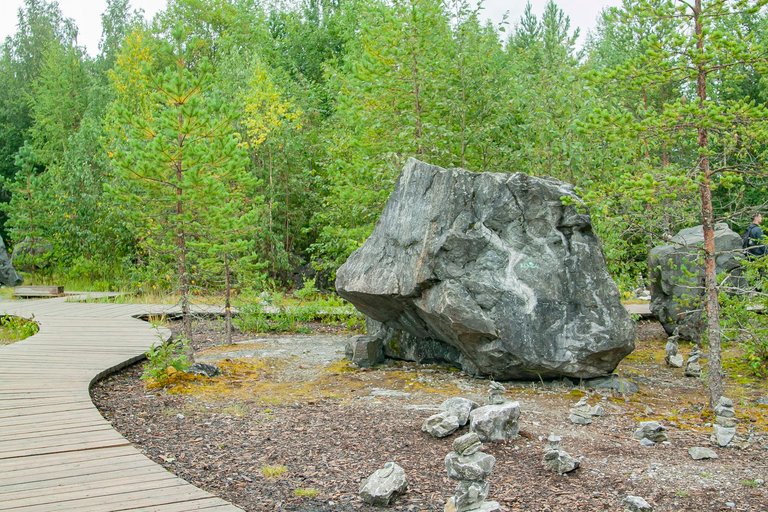
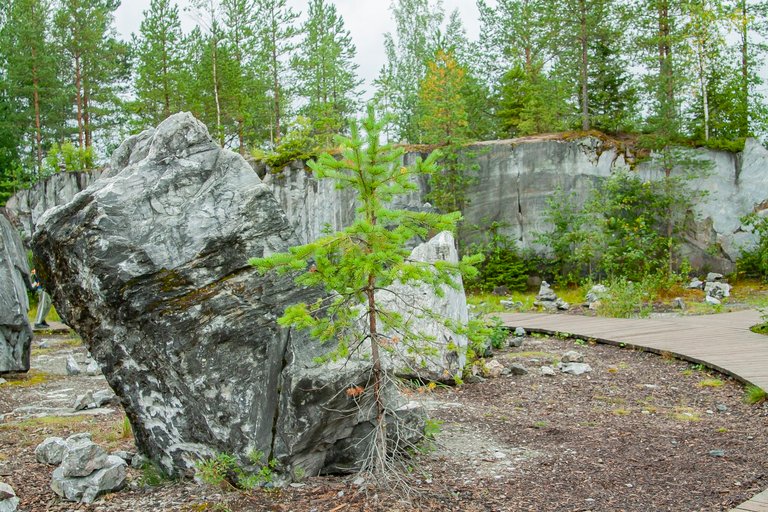
HELP FROM THE NETWORK: Ruskeala quarries are located about 30 kilometers from the town of Sortavala, near the village of the same name. There is a version that the modern name of the deposit originated from the designation of the river Tohmajoki — Ruskolka (translated from Karelian means "brown", "red"), on the banks of which the quarry is located. The inhabitants gave her this name because of the high content of iron compounds in the composition of the water. The extraction of marble blocks in this area was first started by the Swedes in the 17th century. They built quarries and used local raw materials to make lime. After the end of the Northern War, the deposit appeared on the territory of Russia.

The guidebook stated that this marble was not suitable for cutting large blocks. Its structure is quite crumbly. This marble was cut into thin layers with a large saw, they were refined from the edges, getting polygonal tiles of different sizes and laid like a large mosaic.
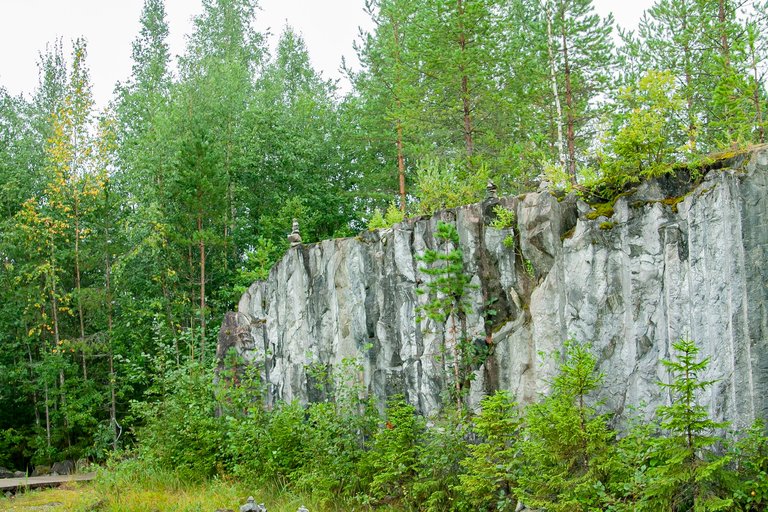
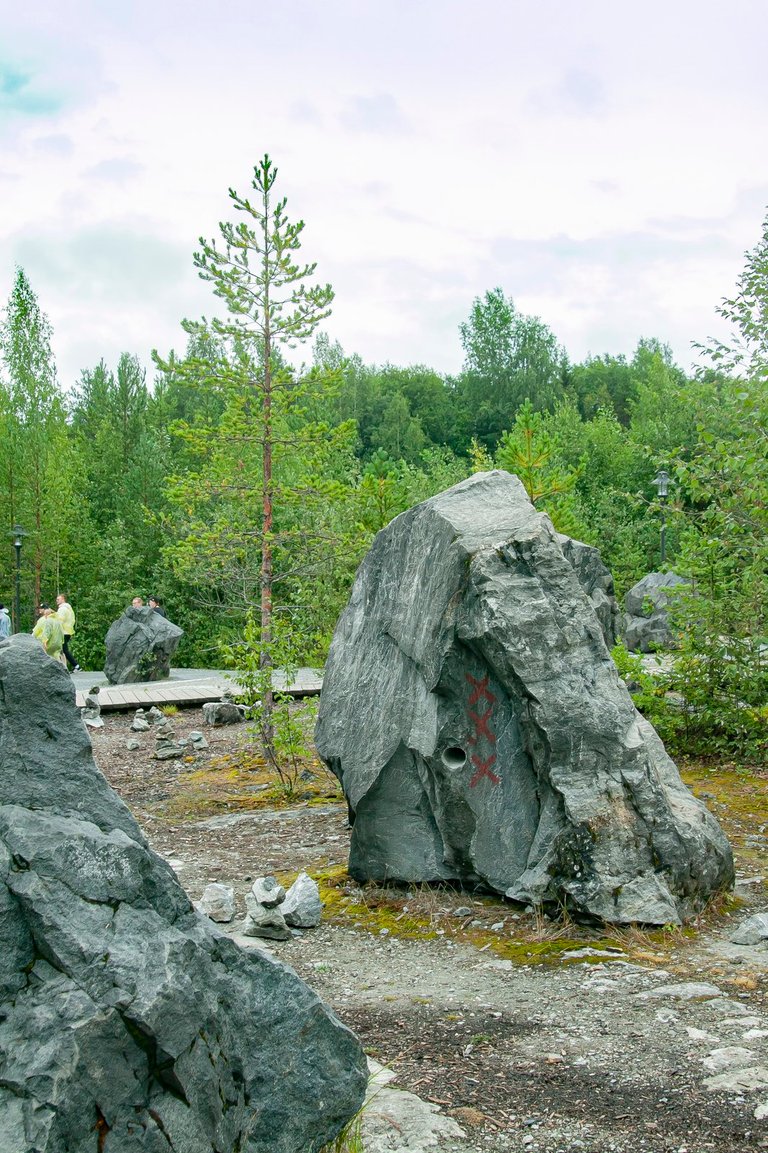
This place is very cozy. There is even a kind of marble pool, cut out of the rock for unknown reasons. The water in the pool is greenish and I probably wouldn't really want to swim there, even if the weather wasn't rainy.
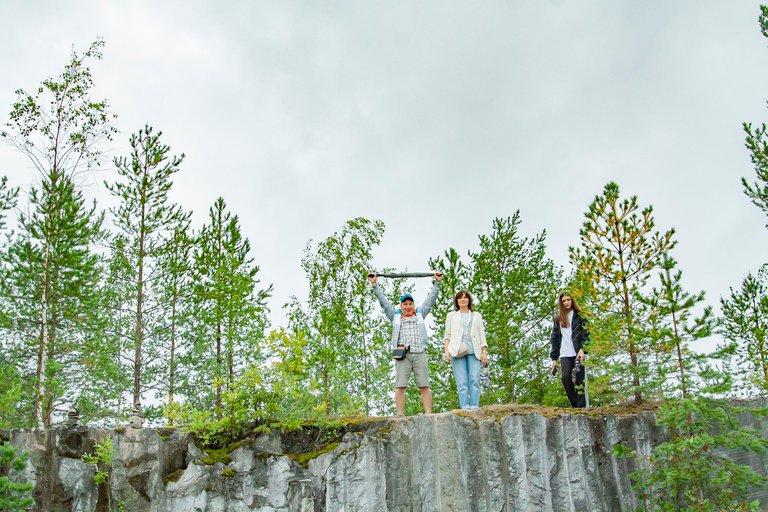
But we were unlucky with the weather. Clouds kept rolling in, and after relatively short periods of dry weather, nasty, fine rain began to fall again. Everything that day looked very much like autumn, however, even though I was walking in just a T-shirt, I wasn't cold.
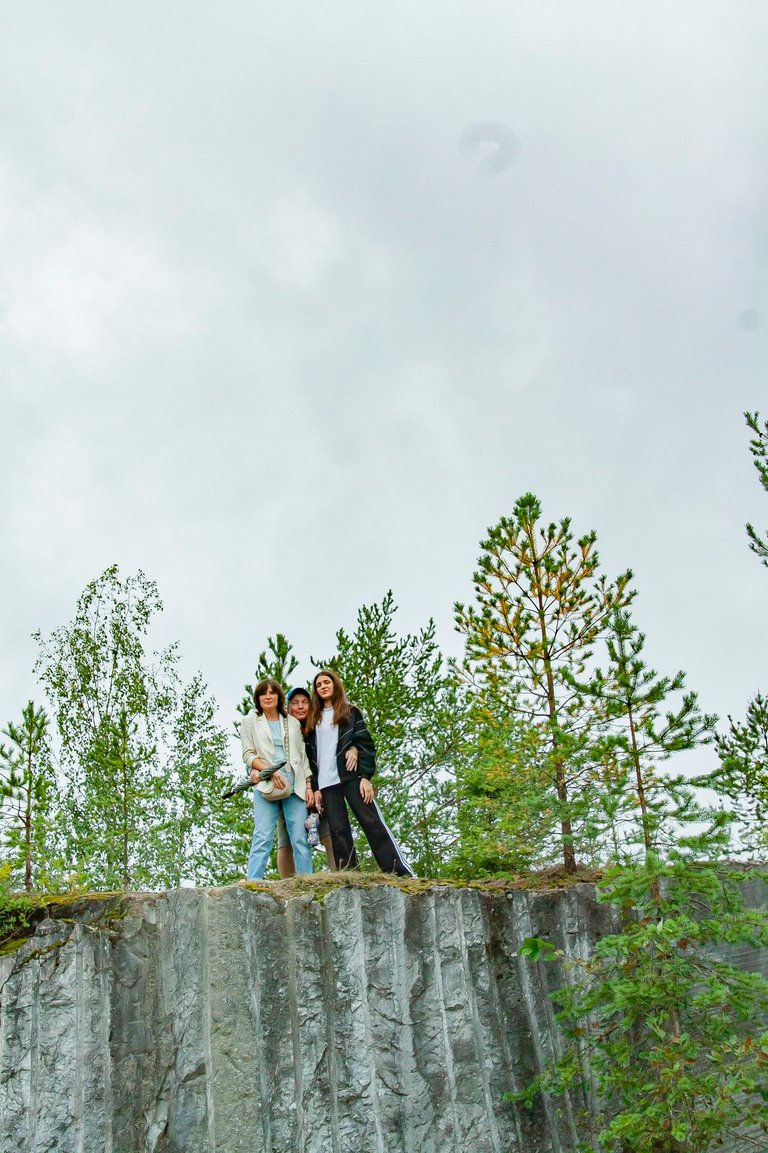
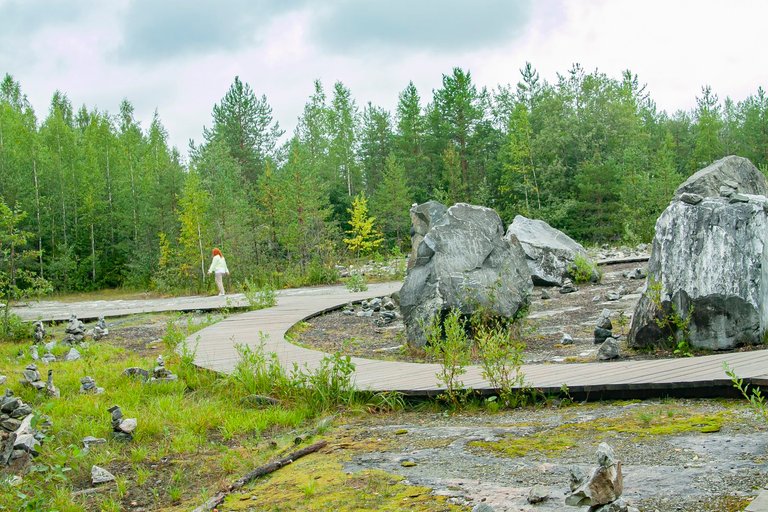
There are excellent photo zones everywhere. Maybe because of the bad weather, but there weren't many people walking here. We managed to take a lot of family photos and individual selfies against the background of huge marble boulders and on their tops. I didn't post many of the photos because the landscape itself is interesting here, not the people.
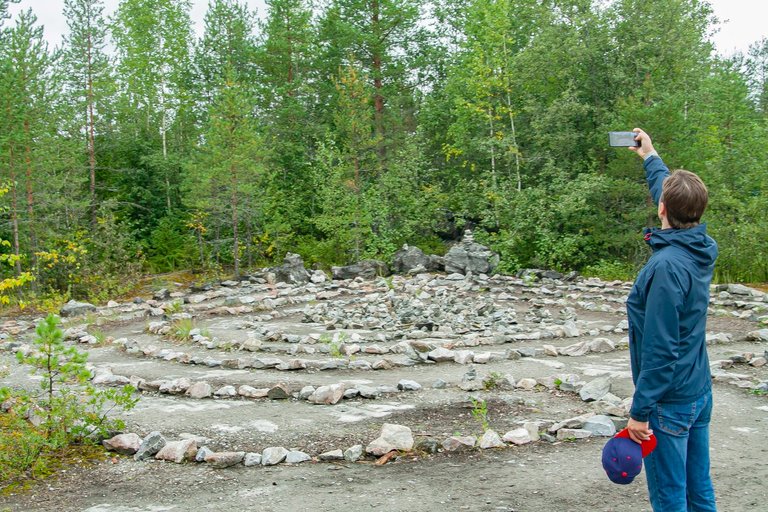
Some huge marble stones look as if they were specially cut by some huge giant knife. I also noticed round holes in some of the stones. Most likely, this was done by mining engineers or geologists who took samples of marble rock.
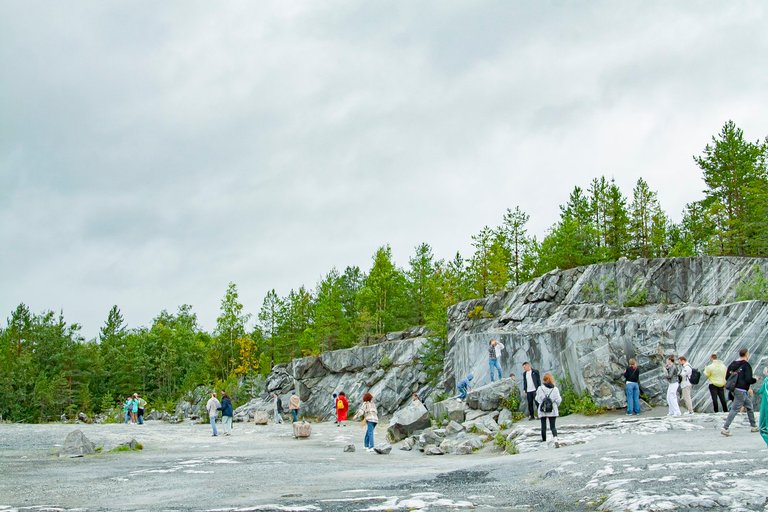
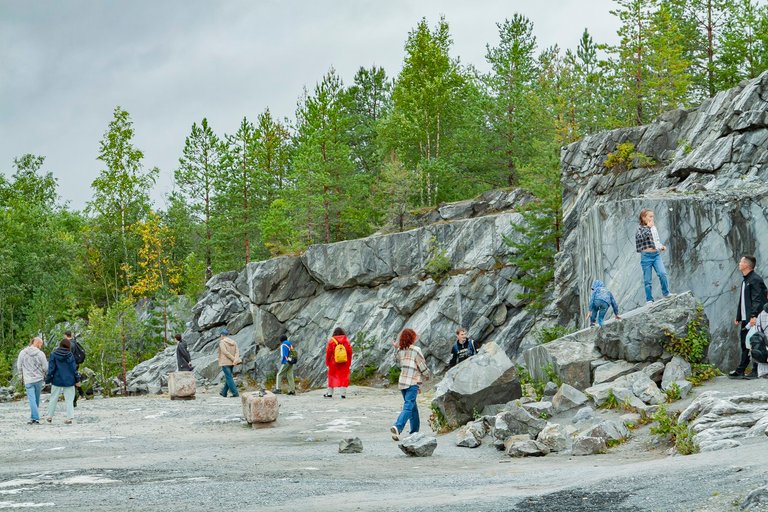
In the next post, we will walk further through Ruskeala Park and see a number of other interesting sights. I will also try to find other interesting information about this place from the web. And that's all for today!
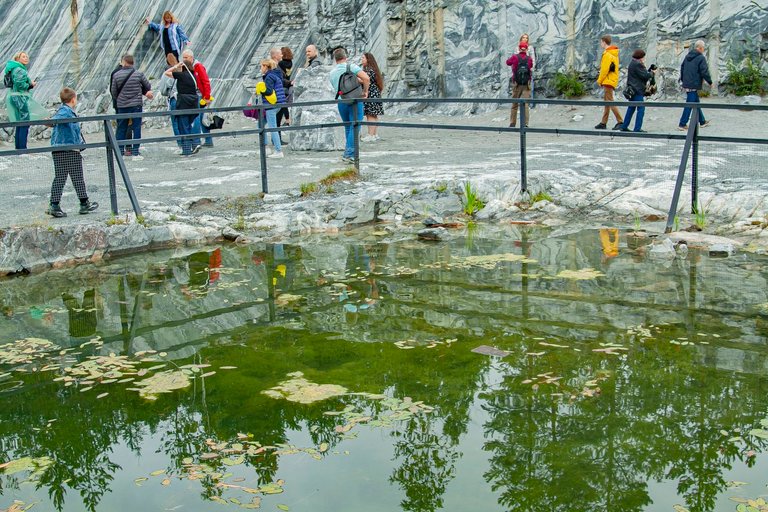
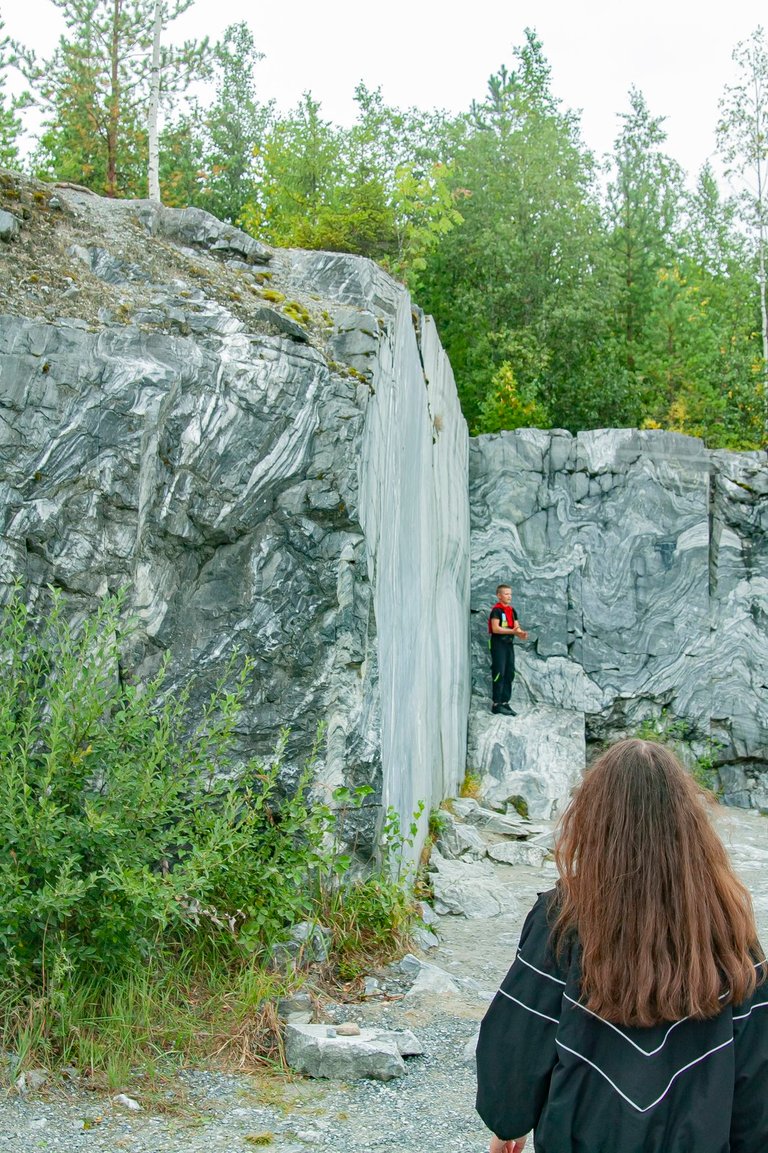
Когда мы пришли на мраморную каменоломню, мне сразу же показалось, что я уже где-то видел такой мрамор. И оказался прав: именно из этого места добытый мрамор использовали при строительстве и отделке некоторых станций метро Петербурга.
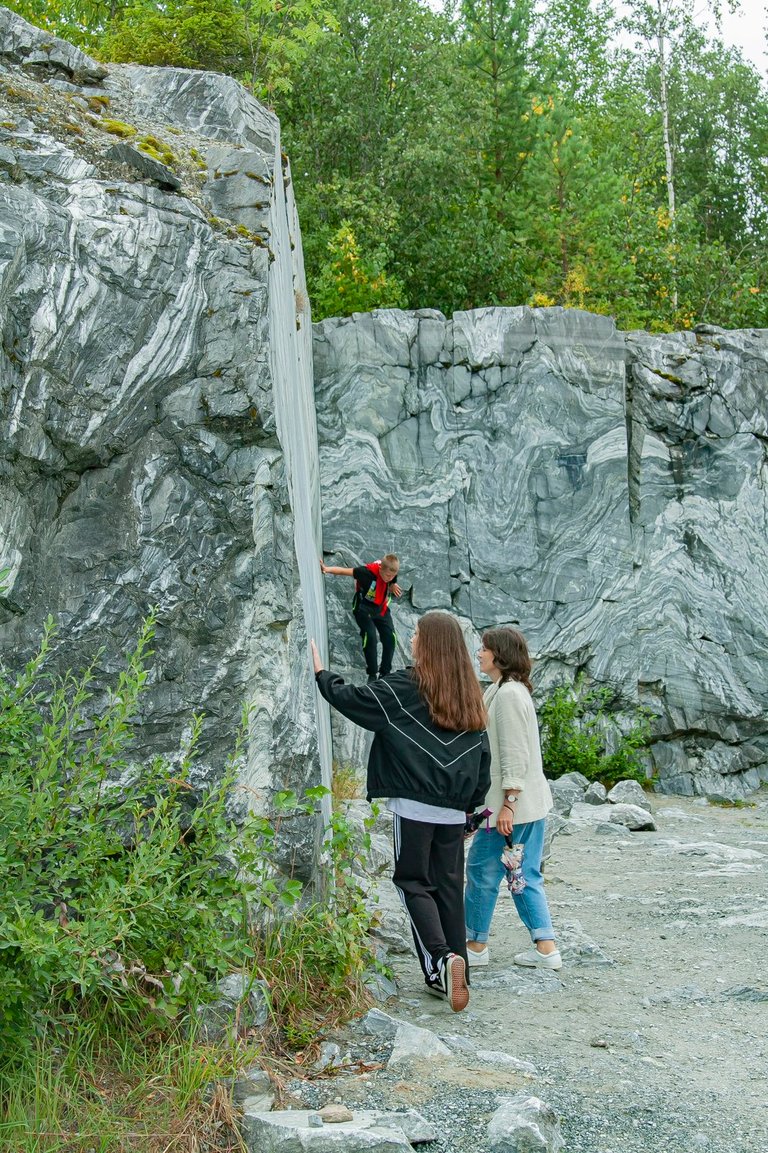
СПРАВКА ИЗ СЕТИ: Рускеальские каменоломни расположены примерно в 30 километрах от города Сортавала, неподалёку от одноимённого посёлка. Есть версия, что современное название месторождения возникло от обозначения реки Тохмайоки — Русколка (в переводе с карельского значит «коричневый», «рыжий»), на берегу которой и находится карьер. Такое имя жители дали ей из‑за высокого содержания соединений железа в составе воды. Добычу мраморных блоков в этом районе впервые начали шведы в XVII веке. Они построили каменоломни и использовали местное сырьё для изготовления извести. После окончания Северной войны месторождение оказалось на территории России.
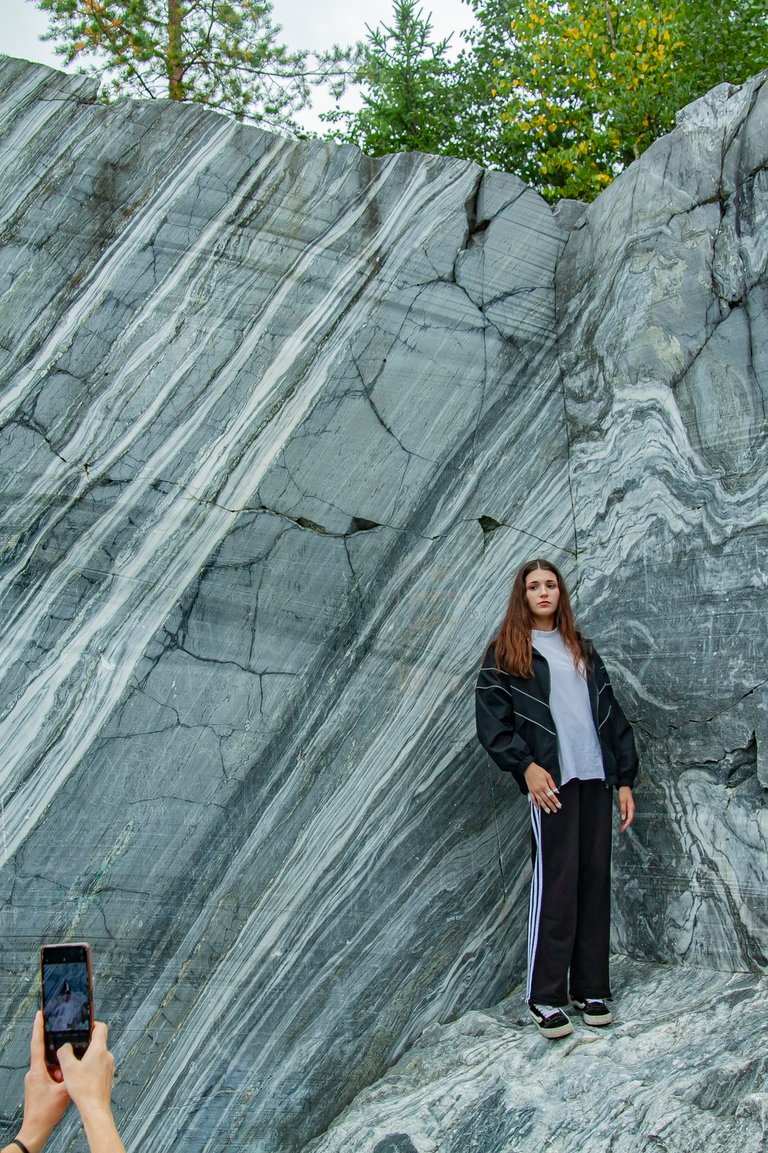
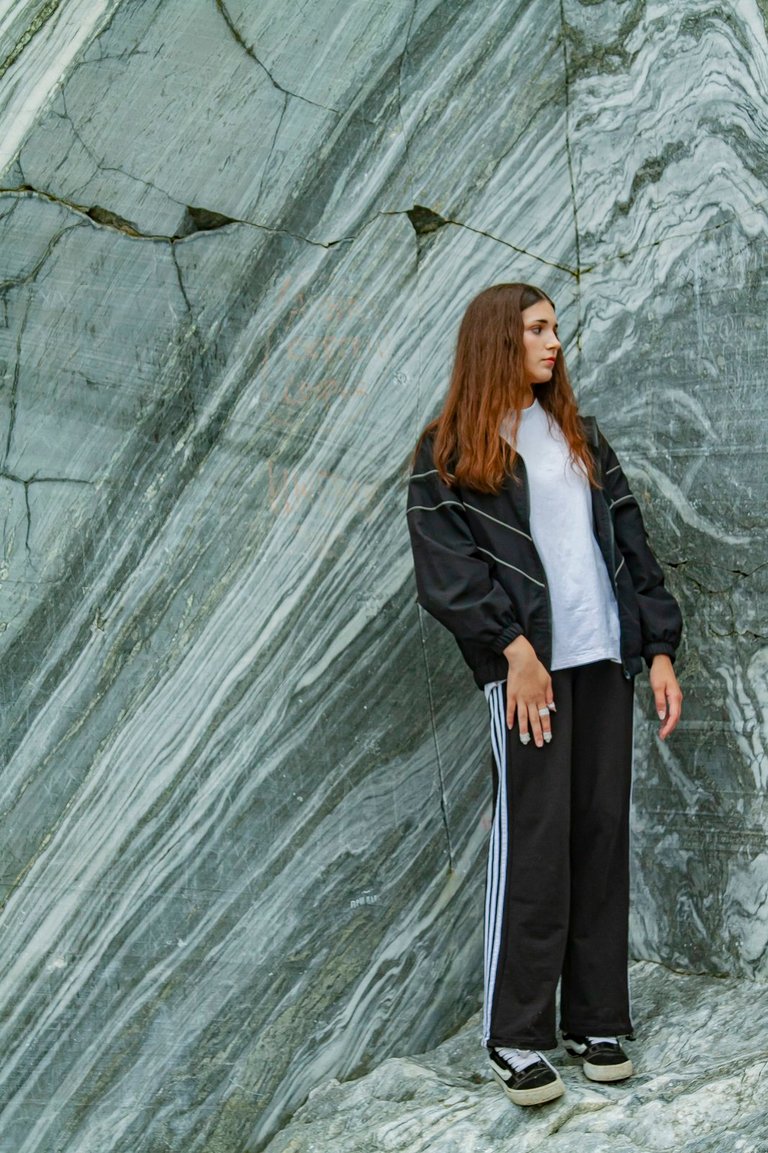
В путеводителе было указано, что этот мрамор не годился для нарезания крупных блоков. Его структура довольно рассыпчатая. Этот мрамор нарезали большой пилой тонкими слоями, их дорабатывали с краёв, получая многоугольные плитки разного размера и укладывали, как крупную мозаику.
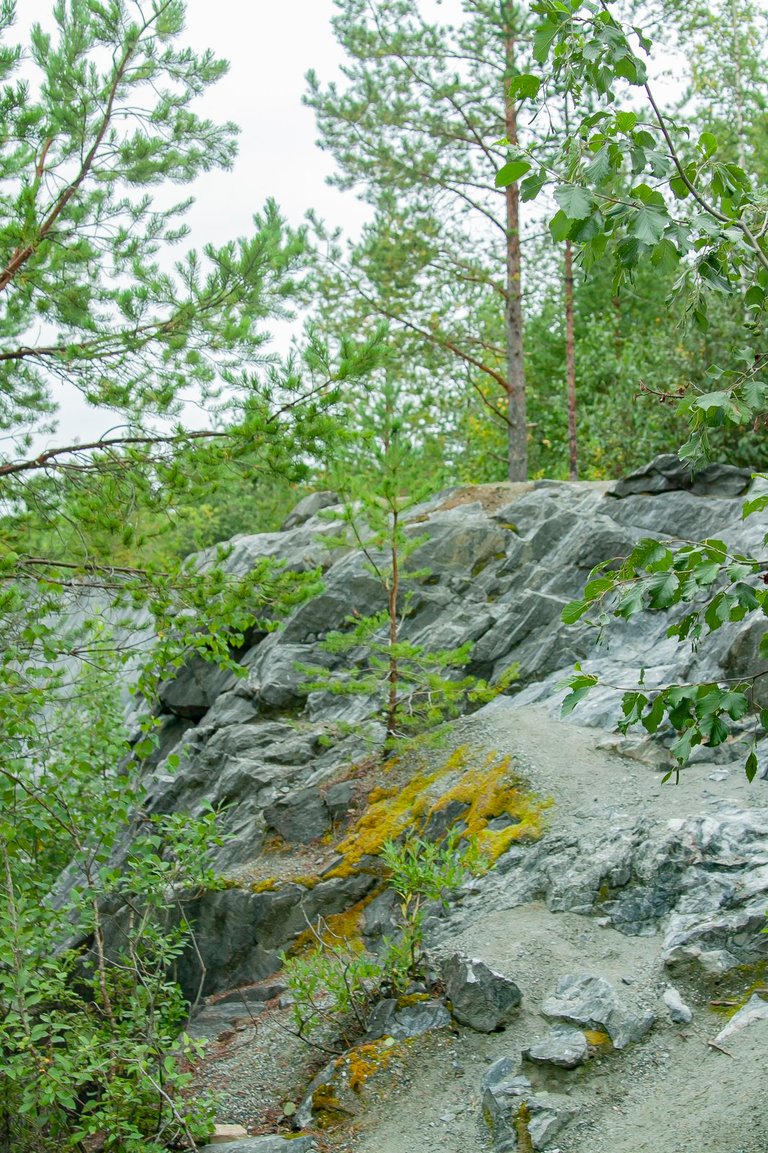
В этом месте очень уютно. Здесь есть даже своеобразный мраморный бассейн неизвестно для чего вырубленный прямо в скале. Вода в бассейне зеленоватая и я бы, наверное не очень хотел там искупаться, даже если бы погода была не дождливой.
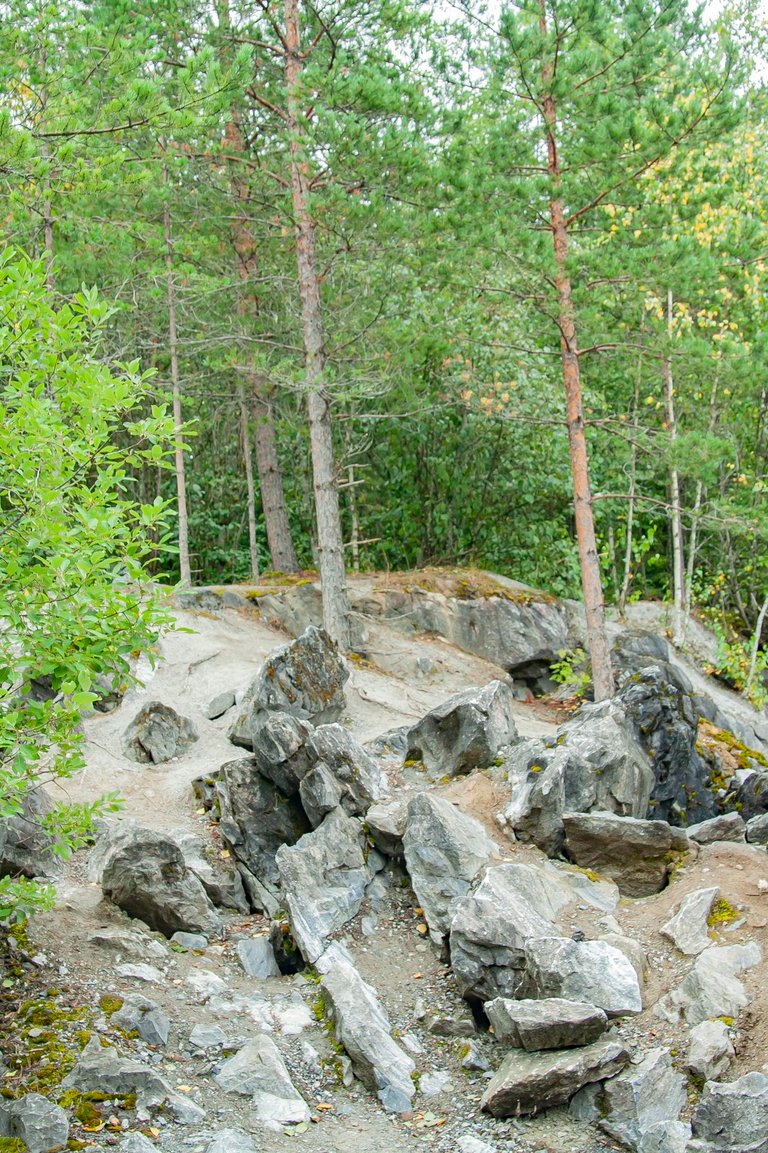
Но с погодой нам не повезло. То и дело набегали тучи и через относительно короткие периоды сухой погоды, снова начинал лить противный мелкий дождь. Всё в тот день очень походило на осень, правда, хоть я и гулял в одной футболке, холодно мне не было.
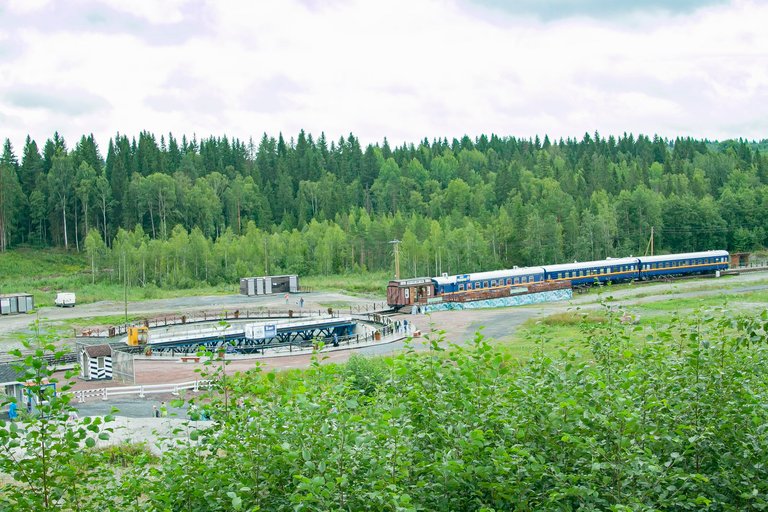
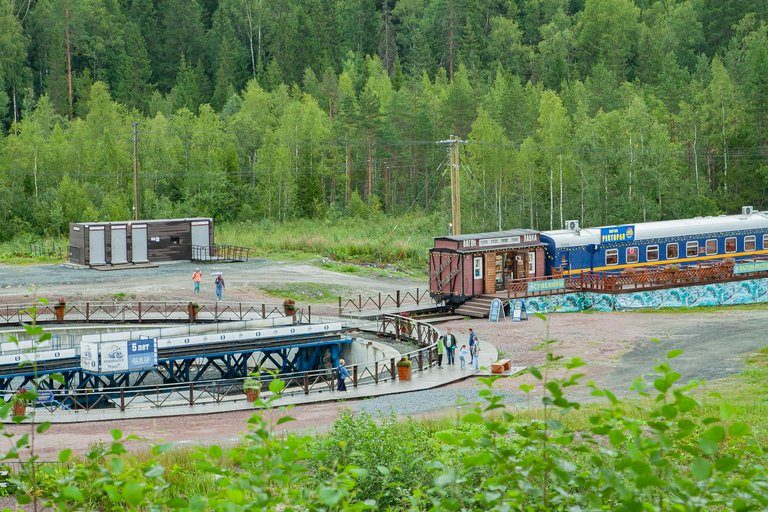
Здесь всюду отличные фотозоны. Может быть из-за непогоды, но людей здесь ходило мало. Нам удалось сделать много семейных фотографий и отдельных селфи на фоне огромных мраморных валунов и на их вершинах. Я не стал публиковать многие фото, так как здесь интересен сам ландшафт, а не люди.
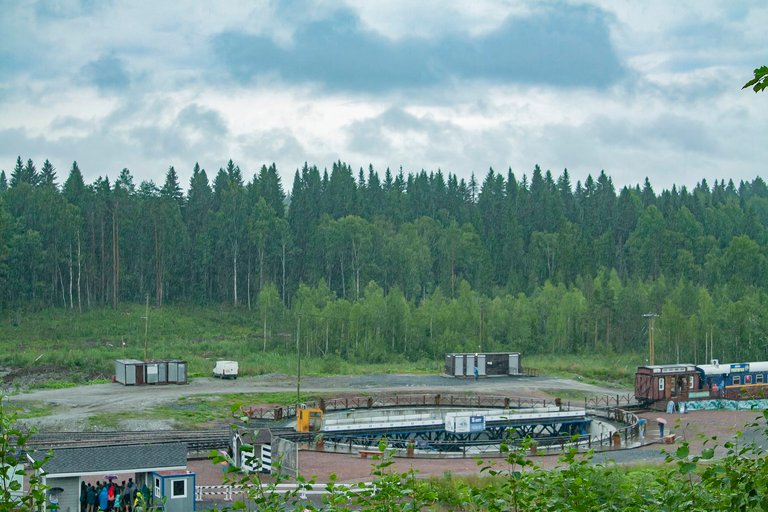
Некоторые огромные камни из мрамора выглядят так, будто их специально рассекли неким огромным ножом гиганта. Также в некоторых камнях я заметил круглые отверстия. Скорее всего это сделалы горные инженеры или геологи, которые брали пробы мраморной породы.
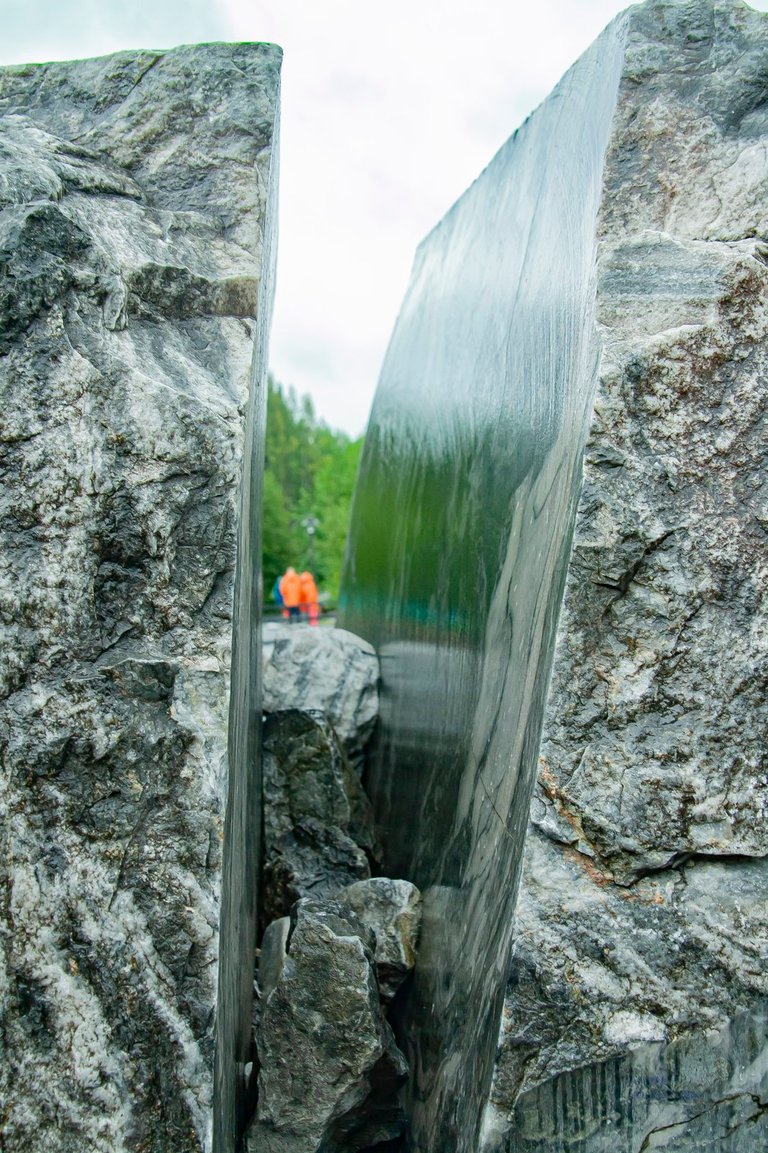
В следующей публикации мы пройдём дальше по парку "Рускеала" и увидим ещё ряд интересных достопримечательностей. Также я постараюсь отыскать другую интересную информацию об этом месте из сети. А на сегодня у меня всё!
